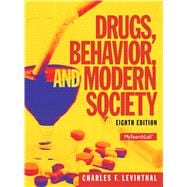Provides students with a deeper understanding of what impacts drug use.
The eighth edition of Drugs, Behavior, and Modern Society examines the impact of drug-taking behavior on our society and our daily lives. The use and abuse of a wide range of licit and illicit drugs are discussed from historical, biological, psychological, and sociological perspectives.
In today's world, drugs and their use present a social paradox, combining the potential for good and for bad. As a society and as individuals, we can be the beneficiaries of drugs or their victims. This text features a comprehensive review of psychoactive drugs, and is notable for the attention it gives to two aspects of drug-taking behavior that have been underreported in other texts: steroid abuse and inhalant abuse.
This text is available in a variety of formats — digital and print. Pearson offers its titles on the devices students love through CourseSmart, Amazon, and more.
Learning Goals
Upon completing this book, readers will be able to:
- Understand the impact of drug use on behavior and society.
- Examine the pros and cons to drug use.








